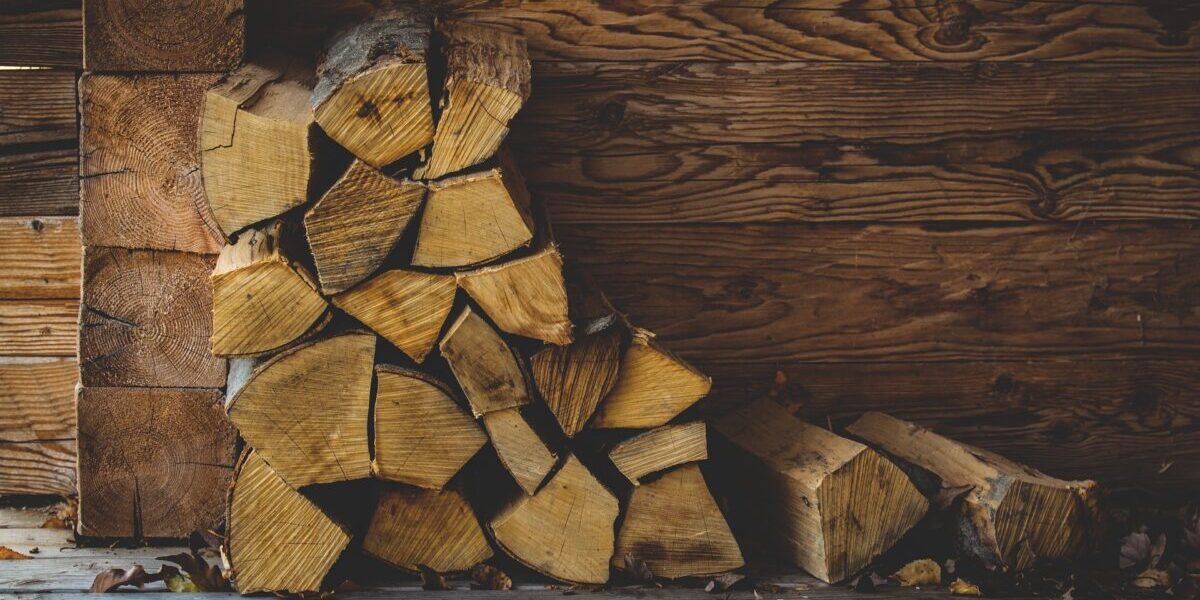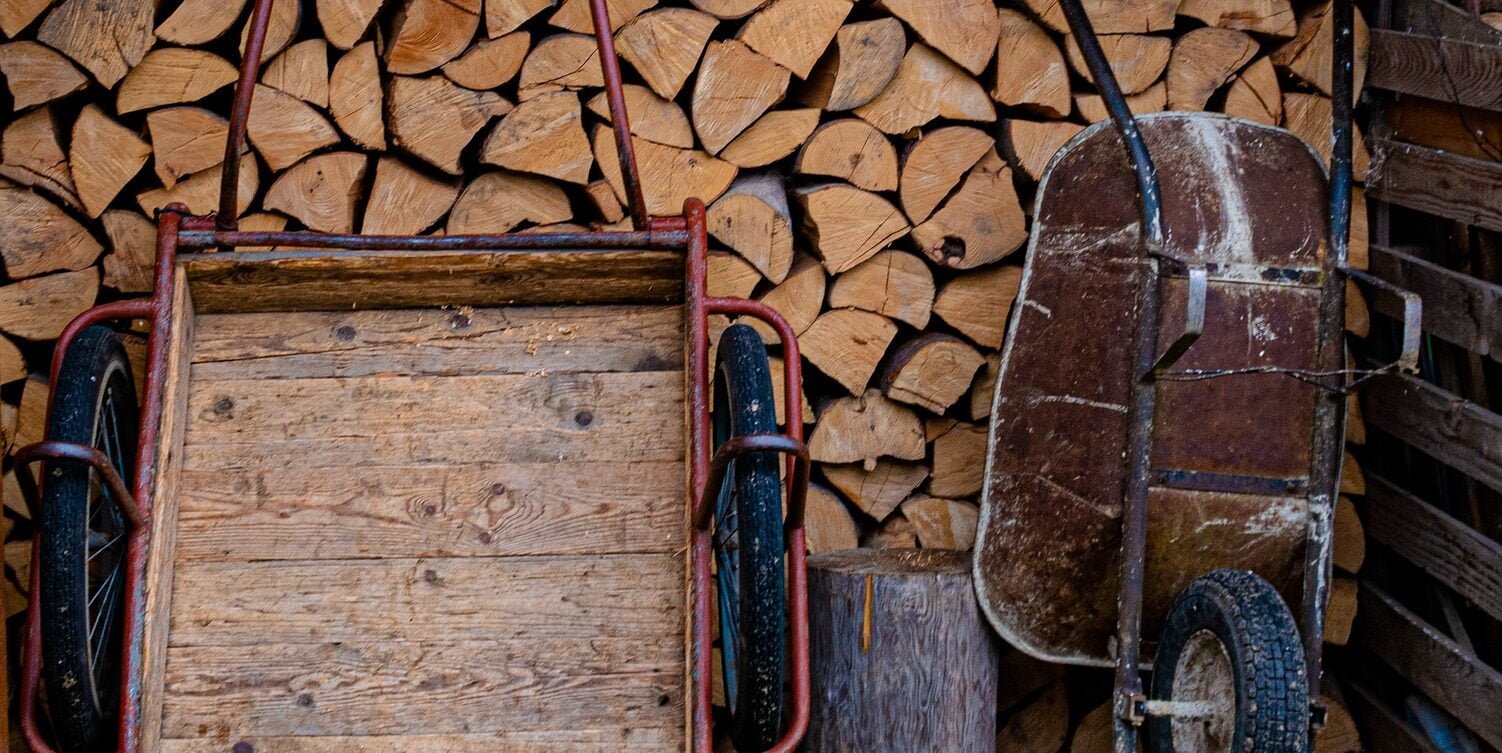With electricity and heating costs continue to increase, many homeowners are looking for a break by cutting their own firewood. Something that might not be completely clear to many is how to actually acquire the firewood.
Table of Contents
Firewood – cutting your own or purchasing, what the best?
Wood should ideally be collected and prepared at least six months before it is used in your stove. Particularly if you have access to fresh wood. Always try to thoroughly dry the wood before burning it. If you prepare the firewood early in the spring, it may dry out over the summer. Keep in mind that even purchased firewood can be damp and must be dried. A good rule of thumb is that the firewood has been outside for at least six months, preferably a year. During that time, the moisture content is typically reduced from approximately 50% (newly cut) to approximately 15-20%, which is sufficient for fires. Fresh wood requires roughly twice as much as dry wood to produce the same amount of heat.
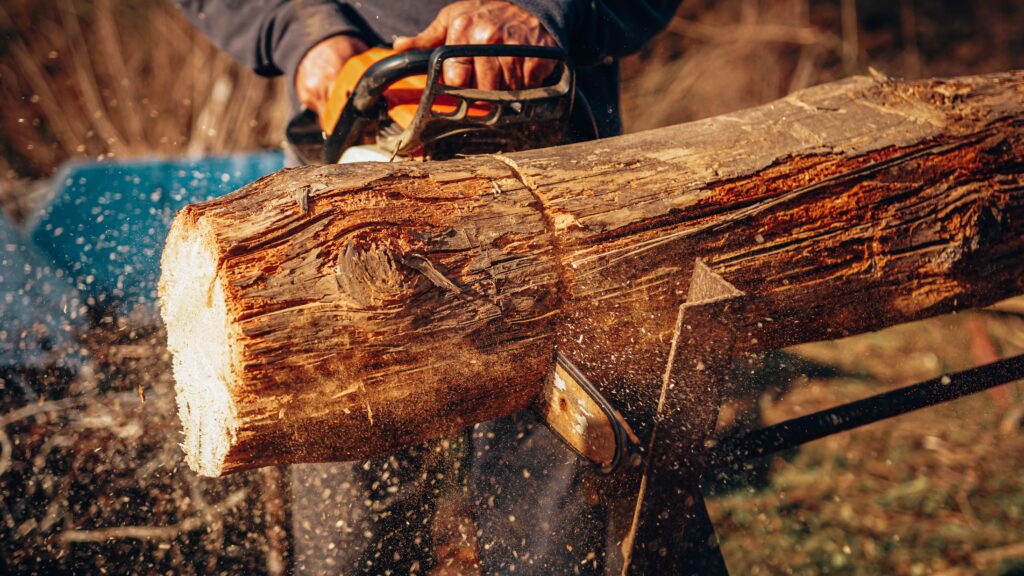
If you want to buy firewood, keep in mind that many sellers raise their prices as winter approaches due to high demand, so buy your firewood in the spring or summer instead. Inquire whether the wood can be burned already and how long it has been dried.
Cutting your own firewood gives you a sense of pride and accomplishment, as does heating your home with something you cut yourself. While also assisting in keeping the heating bill low. However, cutting your own firewood can be both exhausting and dangerous, especially if your chainsaw isn’t working properly or cutting straight. Certain aspects of working with wood can be frustrating if you are a beginner. For example, if you’ve ever tried to start a flooded chainsaw or one that wouldn’t start due to other technical issues.
Naturally, buying your firewood already cut is much easier and saves you a lot of time. However, doing so will have an effect on how much money you save. Cutting by yourself also takes a significant amount of time, which you may not always have. Check out our directory page to find local businesses that sell ready-to-burn firewood.
What if I need large amount of firewood?
Depending on how much firewood you will require throughout the year, purchasing a full year’s supply of pre-cut firewood may be very expensive. Buying bulk firewood and cutting it yourself is one way to keep costs low.
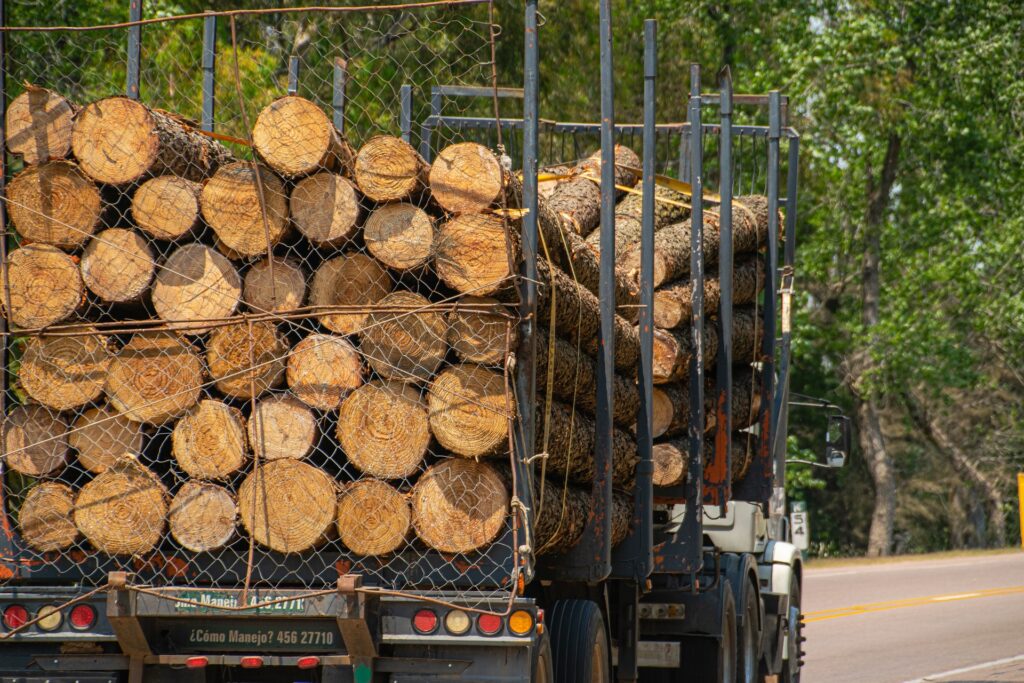
If you have to possibility and equipment to cut firewood on your own property, purchasing bulk wood by the truck-load is a terrific method to have access to a lot of wood cheaply. The logs brought on a semi are usually roughly 8 feet long, straight, and limbless, allowing you to quickly and efficiently cut a large volume of wood.
Safety while cutting Firewood
So you’ve made the decision to cut your own firewood. The first thing you need to think about is how to do it safely. As handling power equipment can be very dangerous and even fatal, knowing the basics is a must – don’t endanger yourself by being unprepared. Find out more about safe chainsaw handling by reading Chainsaw For Beginners: Use, Technique & Equipment.
Wearing the appropriate safety gear and knowing how to operate the chainsaw and other tools correctly can keep you safe and prevent any injury. There are a number of safety equipment items you can get, but we cover the main ones in the post: All types of protective and safety equipment for chainsaw use.
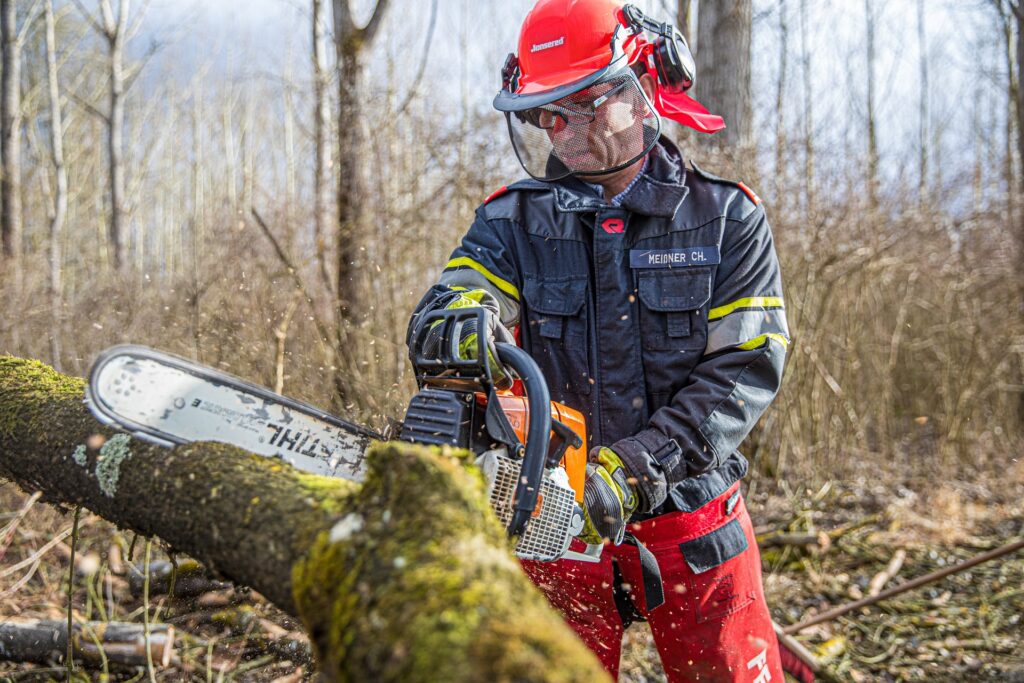
A frequent and common issue when cutting firewood is a pinched chainsaw. This is when the bar gets stuck between the sides of the log. The weight of the tree can cause the log to close up on your saw as you cut a tree that is lying on the ground, especially when you’re making a downhill cut. This can be dangerous as you might cut yourself trying to unstuck the bar.
There are some things you can do to prevent this from happening, a great way is to place a plastic wedge into the top of your cut. We’ve also made an article that talks about this in details with extra advice on how to prevent and handle chainsaw pinching.
The type of Equipment you need for cutting Firewood
Chainsaw
Of course, the most frequently and extensively used tool for cutting firewood is the chainsaw. There are many different brands and models of chainsaws that differ in both price and function. Depending on how much wood you might want to cut and where it is located, you will need to choose the appropriate type of chainsaw. Today the option for an electric chainsaw is often a solid choice. There are however a few things to consider, especially if you are looking to cut a lot of wood. We have an in-depth post on the differences you can read here: Electric vs Petrol Chainsaw: Benefits, Differences & Usage.
To discover more about the many varieties of chainsaws, read this post.
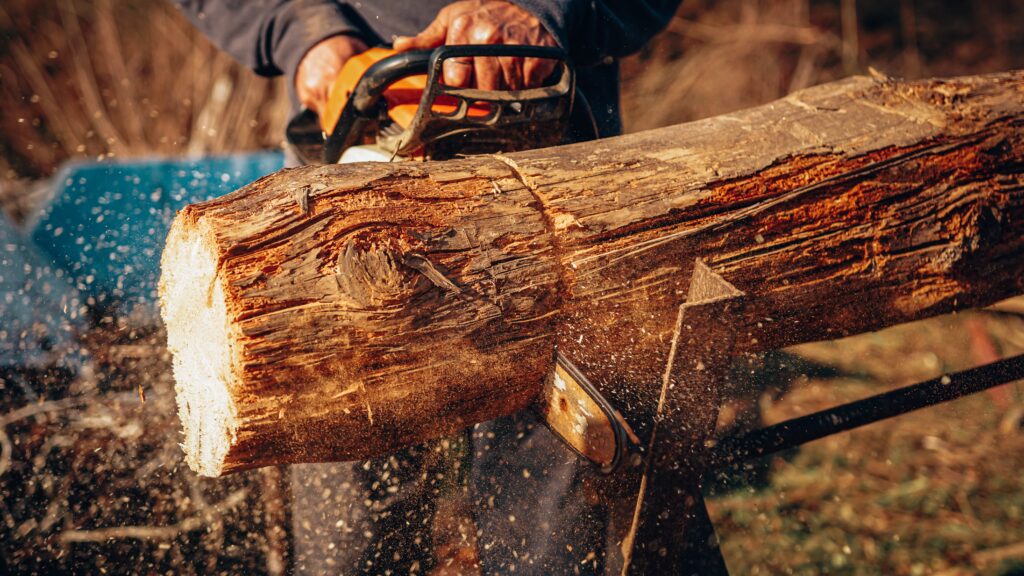
Firewood Cart
After the tree is cut down, the real work starts. The wood must be moved from the woods to your truck or trailer and transported. Then again, from your wood storage to your house. This can be very labor-intensive but this process can be made considerably simpler with a firewood cart or wagon to transport the wood.
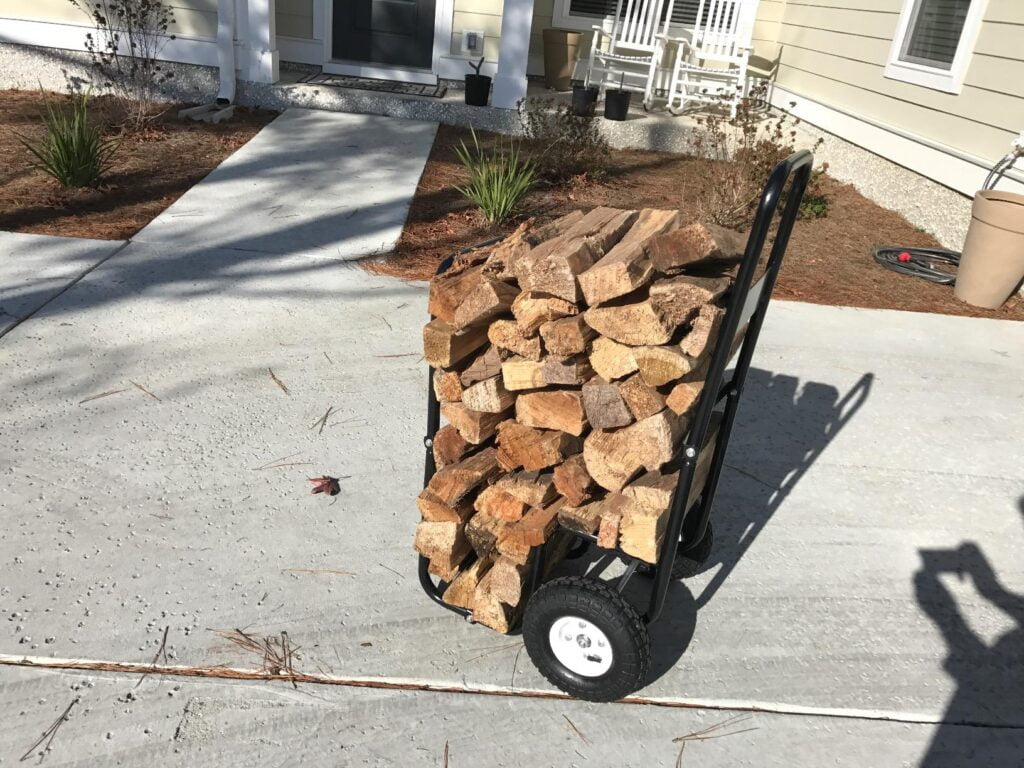
Firewood processor or a Firewood conveyor
If you are looking to cut large amounts of firewood, you may want to look at a firewood processor. The machines are very large and quite pricey, making them an unsuitable option for everyone. However, if you are an enthusiast and wanting to cut large quantities, they make a lot of sense.
What type of wood is ideal for Firewood?
If you want the most burning time/effect for your money, it is important to choose the right type of wood. Soft woods such as pine and fir will burn out faster and they also emit a lot of sparks. Hard woods with a high density such as birch, beech and oak burn significantly longer and have a long-lasting, persistent glow. Some of the finest types of wood to fire with are rowan, beech, ash, maple and birch. If the wood has been attacked by rot, the wood has a reduced heating value, even if the type of wood is fine.
What season is best for cutting Firewood?
Generally speaking, most people would concur that the ideal time to cut firewood is in the spring, as that gives the wood plenty of time to dry out until the winter.
Felling the Tree
Cutting or felling a tree can be very dangerous and even fatal, it is important you know what to do if you are going to attempt cutting one. For a general overview and what to do when felling a tree, read How To Safely Cut Down A Tree.
All types of wood are not perfect to be used for firewood, some are better than others. If you want to learn what trees produce quality firewood please read this article.
Cutting the tree
Something that tremendously makes cutting the tree logs easier is a sawbuck. By placing the log on the sawbuck, you can split longer logs and work faster. The logs stay still and the chainsaw won’t strike the ground since the sawbuck lifts the wood off the ground.
It is possible to buy a sawbuck but it is super simple to make your own, and you can find instructions here.
Cutting into a piece of wood and discovering that it is rotting is not unusual, read more here if it is still suitable to use as firewood.
On certain federal and state lands, you are permitted to harvest firewood but the rules are different so it is important to find out before.
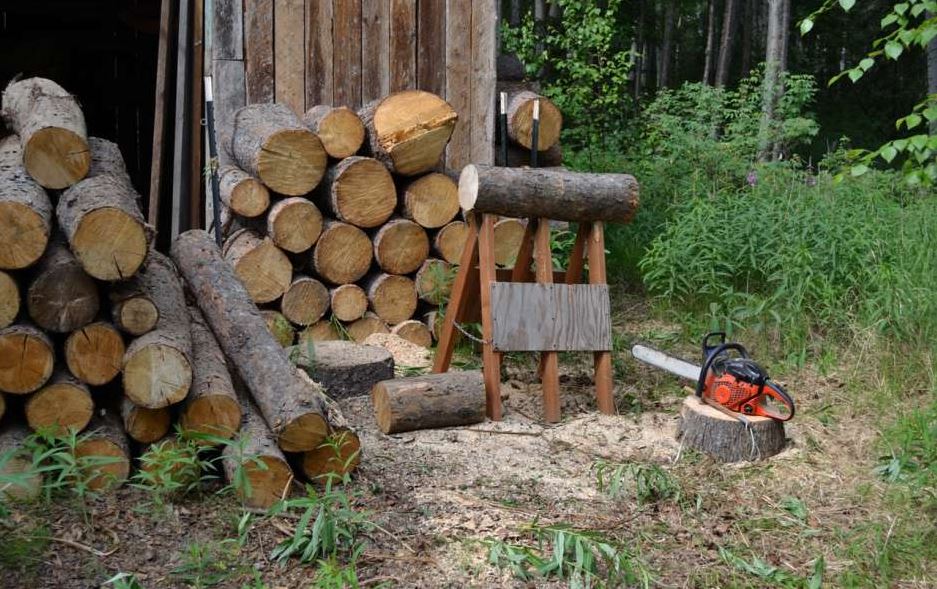
Wear and tear on Chainsaws
Despite the fact that chainsaws are made to last, ultimately some parts wear out and needs to be replaced. A frequent issue with chainsaw is a clutch failure, which can led to the saw seizing up and ceasing to operate. However, chainsaws are fairly simple to maintain and repair yourself. Replacement parts are sold by most manufacturers and guides on how to repair can usually be found online. Read this post on how to replace a chainsaw clutch to find out more information. For a guide on how to perform maintenance on your chainsaw, check out: How to Service & Maintain your Chainsaw.
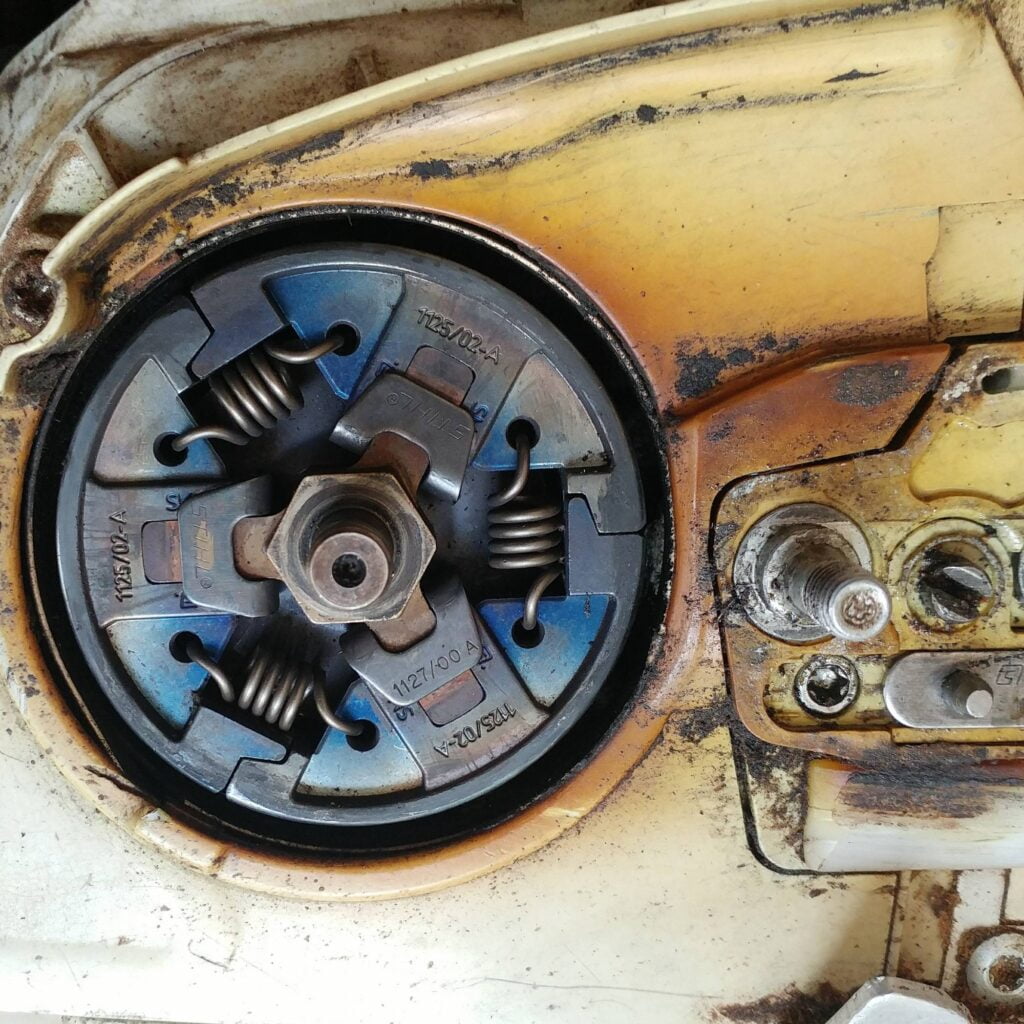
Replacing or sharpening the chain
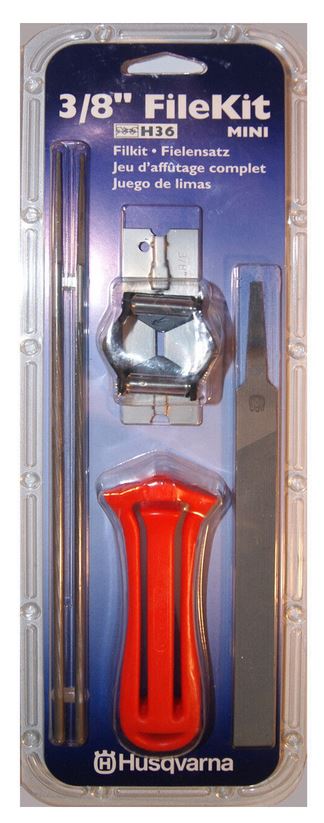
The chain of your chainsaw will ultimately become dull as you use it, especially if you strike dirt or worse still, a nail that was left in the tree.
A bench grinder is excellent for filing chains, but doing so necessitates taking the chain of the chainsaw. This can be both time consuming and difficult. Furthermore, you cannot simply plug in a bench grinder and touch up your chain if you are out in the woods working.
A better option is usually to use a file to sharpen the chain, but it can be challenging to maintain the precise angle without a guide or gauge. However, there are tools that make this process a lot easier and smoother. For instance the Husqvarna chainsaw file kit is a fantastic tool that will quickly restore the edge to your chain.
Correct chain tension
The sharpness of your chain is almost as critical as having the proper chainsaw chain tension. A chain that is too tight won’t dig into the wood and will also prematurely wear down the sprocket and tip of your bar because it puts too much tension on them.
If the chain is excessively slack, it can come loose from the saw and slash your hands or legs.
Read this post on how to adjust chainsaw chain tension in order to properly adjust your saw.
Storing your Chainsaw
In order to make your sewing machine last longer and protect it from the elements, it is important that you store it correctly. Crucial that is always kept indoors, in a dry place when not in use. For everything you might want to consider when putting away tour chainsaw read How to seasonally store your Chainsaw.
Firewood Summary – What you need to cut yourself
Cutting your own firewood is an excellent strategy to cut costs and guarantee that you’re heating your home as cheaply as possible. In order to stay safe, be more effective and save time, make sure you follow the tips we have walked through on this page.

